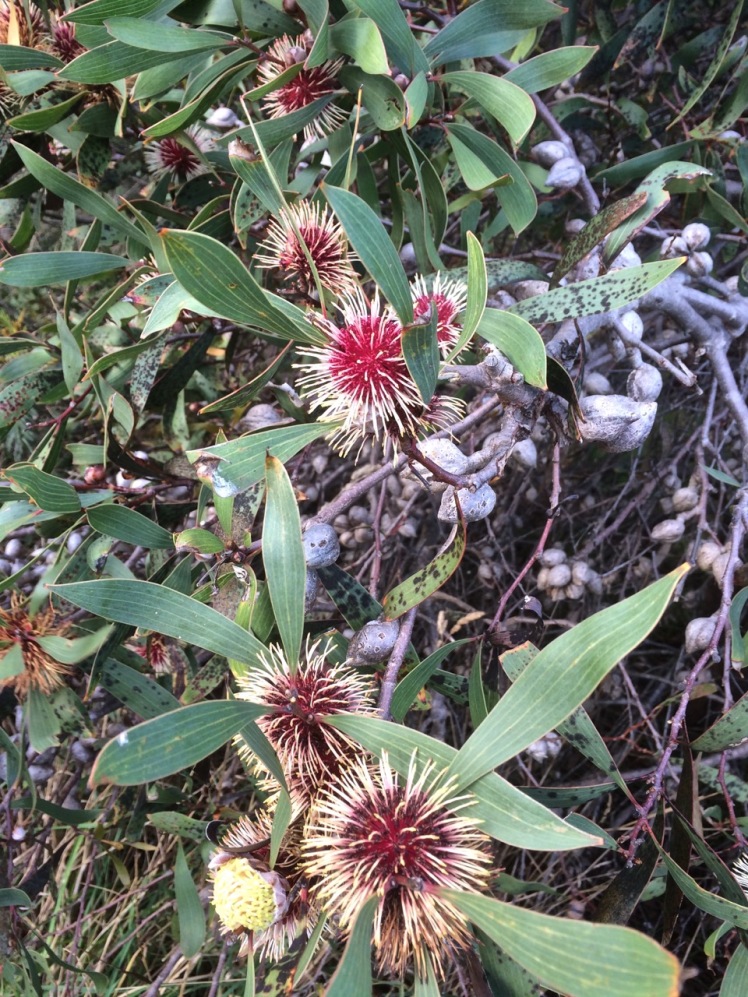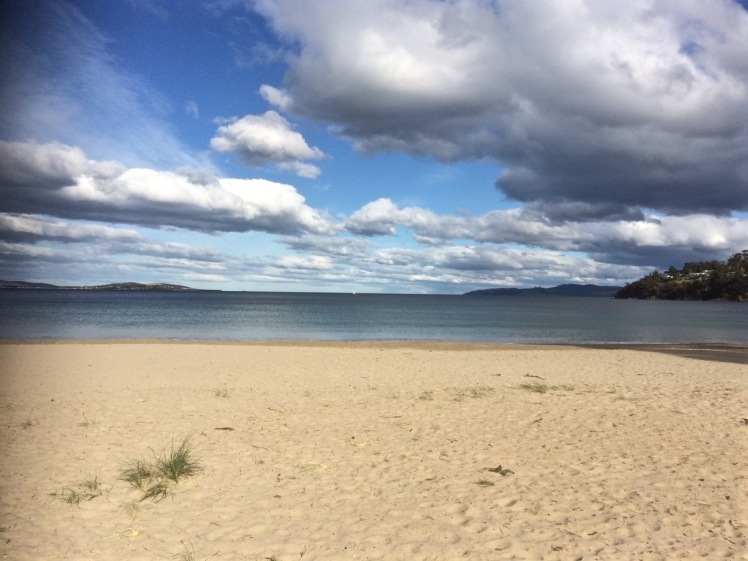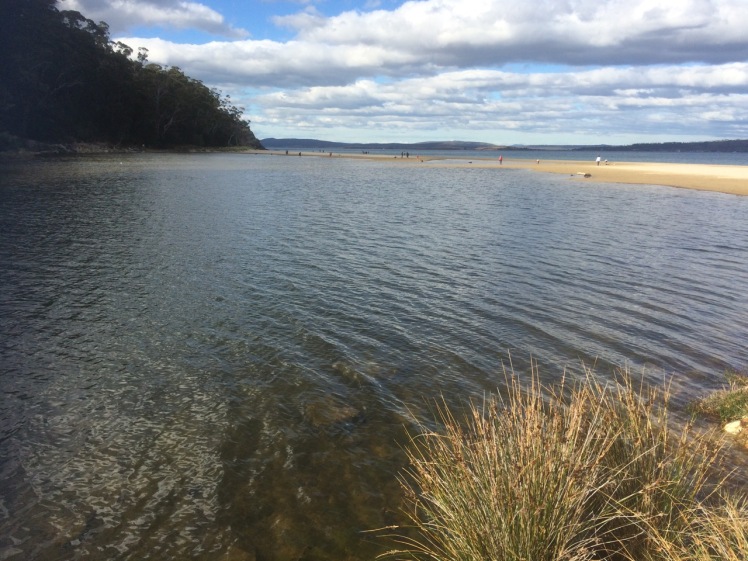Derwent River: South Arm Beaches: Johns Point, Half Moon Bay
Johns Point and its Beach (T417): The minuscule, the long and the vast

There is a great sweep of rock platform with cracks and tessellations that curves around Johns Point at the western end of Fort Beach and then narrows as it wanders north along the base of the cliffs. We’d planned to walk out of Half Moon Bay south onto Fort Beach, but we ended up doing it the other way around because sometimes its okay to be contrary.
The Minuscule but Long
Invertebrates in their tiny rock pool worlds live their quiet watery lives along the reefs here, grazing and hiding out in the variegated forests of seaweed, while beside them the river and Storm Bay sweep one into the other. There’s an altitudinal order on the reef. When the tide recedes some barnacles, periwinkles and limpets will sit out the dry period while other reef species make sure they’re fully immersed.
Many of these tiny beings know more about the river than we would imagine and between conversations with Cathy as we walked along beneath the cliffs that sunny day I was contemplating barnacles in particular, those small hermaphrodites in their calcareous huts that choose to stand on their heads, that relative to their size have the longest penises* in the world (it’s true – move over, elephants!), their wispy little cirri feet swaying in the water but who look to be as sessile as trees. Why move, when the river brings endless meals of assorted meats and veg in the form of phytoplankton and zooplankton, right on to your calcareous plates and your perfectly adequate cirri spoon them into your mouth?
Only, if these arthropods were really that sedentary I wouldn’t find them seeking trips on Samos’s hull, so what’s going on?
What’s going on is the exploratory tendencies of all of us who are either young or young at heart. After being brooded by their parent they become travellers in the body of water they find themselves in, swimming free in their naplius one-eyed larval stage, part of the great planktonic realms of the river. These little crustaceans are in their cyprid stage by the time they’re ready to settle down. Brushing up against a boat’s hull, they choose it. Landing on a rock, that’s where they stay. Shoved against a jetty paling, their little feet cling to it or, more adventurously, they hitch a ride on a passing whale**. The cement they exude from their antennae is so powerful science is trying to mimic it and Charles Darwin, who walked this river paying deep attention to its geology and life forms, had a particularly fascination for the not so humble barnacle — he knew of its achievements, both physical and chemical.
Vast
I knew from my earlier walks that across the Derwent, just inside the D’Entrecasteaux Channel, there were other rock platforms with a similar species richness and that just as the barnacle’s home looked like a tiny volcano, Charles Darwin had discovered deposits from an extinct one off Taroona. I was beginning to see how the vast geology of Tasmania reveals itself if you put on your walking shoes – fossils in siltstone and sandstone on either bank, similar weathering, layers of shell in the South Arm stratigraphy. We were enjoying the patterns unfolding in the rocks when unexpectedly we arrived on a little beach. Cathy pointed out a line of houses on the cliff top. My attention had been on the tiny secrets the rocks and pools were unveiling and I was somewhat surprised to see civilisation above the blue sweep of the river that was filling the hollows and depths of the drowned rift valley spread about us.
Beside the jetty we stood on the sand for a moment contemplating the scope of Half Moon Bay and relishing the fact that we had now walked its entirety, avoiding pesky roads. But beaches are transient landscapes. They change every day, and incrementally so do we. Some events marked in the sand – the small wanders of a plover, for example – get extinguished by wind or water. Some traces and tracks get sandwiched by sand, perhaps even fossilised. That’s one of life’s lessons you can read on a beach, the nature of memory.
We could not claim to know the beaches we had walked so far. In human terms, our meetings with beaches were no more than briefly meeting someone’s eye at a bus stop, but this walk around the reef, and the pleasure of discovering a beach was a completely fulfilling way to while away an hour at the end of a longer walk.
*This Californian Academy of Science video is worth a watch.
** A whale washed up on a NZ beach carrying some stupendous barnacles. A video worth watching because it also demonstrates the respect of the local maori for the whale.
To read more see the website Life on Australian Seashores


















































